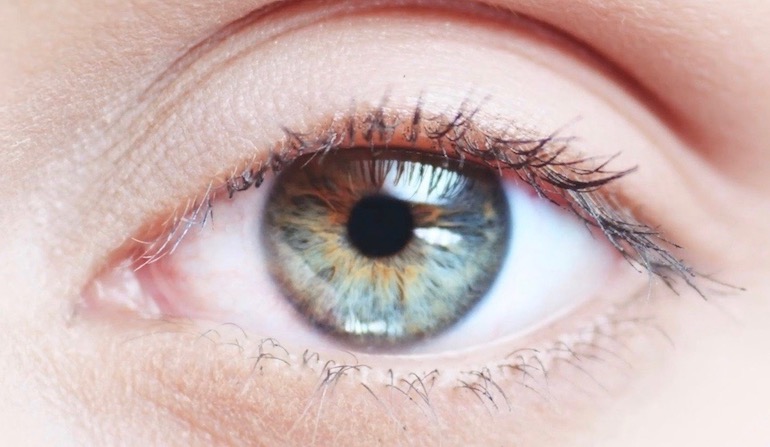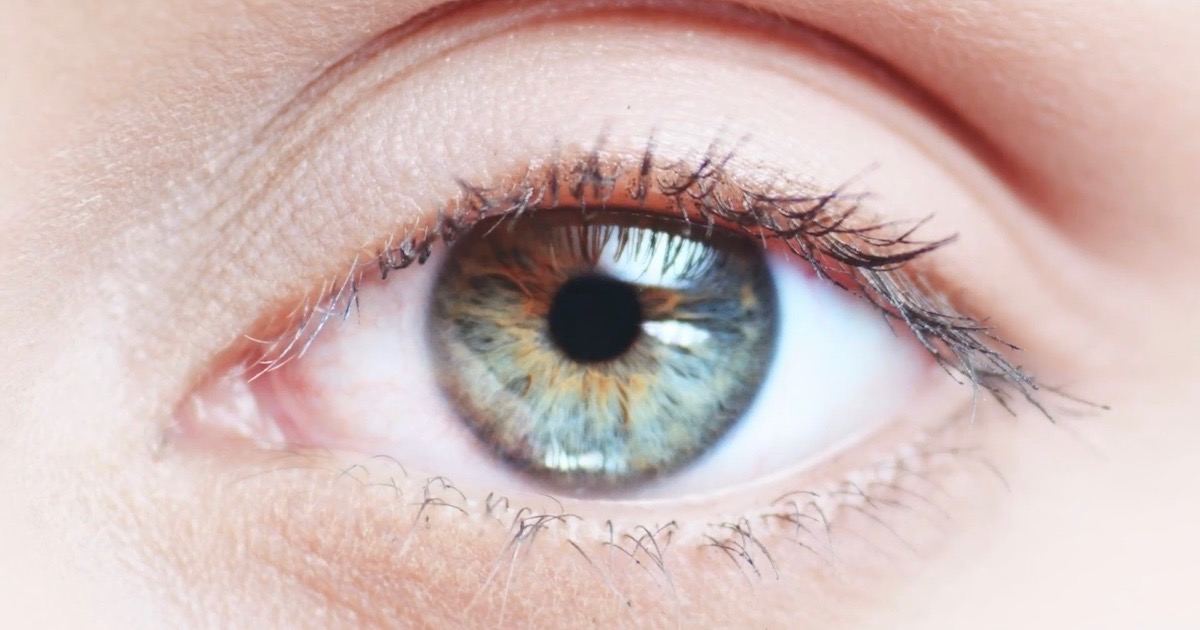 Evolution
Evolution
 Intelligent Design
Intelligent Design
Is the Human Eye Really Evidence Against Intelligent Design?


Some people argue that the human eye is flawed, proving that it was not intelligently designed but evolved by unguided processes.
Both vertebrates (animals with backbones, such as humans) and cephalopods (molluscs with tentacles growing from their heads, such as squids and octopuses) have camera eyes, which are roughly spherical organs with lenses that focus images on light-sensitive retinas. In vertebrate eyes, the light-sensing cells (c and f in the drawing below) point towards the back of the retina, and the nerve cells that transmit signals to the brain (b in the drawing) are between the light-sensing cells and the incoming light. By contrast, in cephalopod eyes the light-sensing cells point toward the incoming light and the nerve cells are at the back.

In 1986, Richard Dawkins published The Blind Watchmaker: Why the Evidence of Evolution Reveals a Universe Without Design. In it, Dawkins used the vertebrate eye as evidence against design:
Any engineer would naturally assume that the photocells would point towards the light, with their wires leading backwards towards the brain. He would laugh at any suggestion that the photocells might point away from the light, with their wires departing on the side nearest the light. Yet this is exactly what happens in all vertebrate retinas. Each photocell is, in effect, wired in backwards, with its wire sticking out on the side nearest the light. The wire has to travel over the surface of the retina, to a point where it dives through a hole in the retina (the so-called “blind spot”) to join the optic nerve.
Vertebrate eyes work reasonably well, Dawkins conceded, but “it is the principle of the thing that would offend any tidy-minded engineer!”1
Six years later, evolutionary biologist George Williams wrote, “There would be no blind spot if the vertebrate eye were really intelligently designed. In fact it is stupidly designed,” while “the retina of a squid is right side up.”2
In 1994, biology professor Kenneth R. Miller argued similarly that the human eye — “that supposed paragon of intelligent design” — is badly designed. “Quite naturally,” he wrote, “you (and any other designer) would choose the orientation that produces the highest degree of visual quality. No one, for example, would suggest that the neural wiring connections should be placed on the side that faces the light, rather than on the side away from it. Incredibly, this is exactly how the human retina is constructed.” By contrast, a cephalopod retina is “wired right-side-out.”3
In 2005, Douglas Futuyma published a textbook about evolution claiming that “no intelligent engineer would be expected to design” the “functionally nonsensical arrangement” of cells in the human retina.4 The same year, geneticist Jerry Coyne wrote that the human eye is “certainly not the sort of eye an engineer would create from scratch.” Instead, “the whole system is like a car in which all the wires to the dashboard hang inside the driver’s compartment instead of being tucked safely out of sight.” Like Dawkins, Williams, Miller, and Futuyma, Coyne attributed this to unguided evolution, which “yields fitter types that often have flaws. These flaws violate reasonable principles of intelligent design.”5
A 2014 biology textbook by Kenneth Mason, Jonathan Losos, and Susan Singer informs students, “an excellent example of imperfect design is the eye of vertebrate animals, in which the photoreceptors face backward, toward the wall of the eye.” By contrast, the eyes of cephalopods “are more optimally designed.”6
Molecular biologist Nathan Lents wrote in 2015, “The photoreceptor cells of the retina appear to be placed backward, with the wiring facing the light and the photoreceptor facing inward…. This is not an optimal design for obvious reasons. The photons of light must travel around the bulk of the photoreceptor cell in order to hit the receiver tucked in the back. It’s as if you were speaking into the wrong end of a microphone.” According to Lents, “there are no working hypotheses about why the vertebrate retina is wired in backwards. It seems to have been a random development that then ‘stuck’ because a correction of that magnitude would be very difficult to pull off with random mutations…. During the evolution of the cephalopod eye, the retina took shape in a more logical way, with the photoreceptors facing outward toward the light. Vertebrates were not so lucky.”7
So from the perspective of evolutionary theory, the human eye is evidence for unguided evolution and against intelligent design. But is the human eye really evidence against design?
The light-sensing cells in a vertebrate retina require lots of nutrients and vast amounts of energy. In mammals, they have the highest metabolic rate of any tissue in the body.8 About three-quarters of the blood supply to the eye flows through a dense network of capillaries called the “choriocapillaris,” which is situated behind the retina (e in the drawing).9,10 Oxygen and nutrients are transported from the choriocapillaris to the light-sensing cells by an intermediate layer of cells called the “retinal pigment epithelium” (RPE, d in the drawing).11
In addition to transporting oxygen and nutrients to the light-sensing cells, the RPE performs two other essential functions. First, the dark pigment in it absorbs scattered light, improving the optical quality of the eye. Second, it removes toxic chemicals that are generated in the process of detecting light. The light-sensing cells contain stacks of discs, and in 1967 Richard Young showed experimentally that a photoreceptor cell continually renews itself by shedding discs at the end closest to the RPE and replacing them with newly synthesized discs at the other end.12 The RPE then engulfs the shed discs and neutralizes the toxins.13
Blood is almost opaque, and the RPE absorbs light. If the light-sensing cells were to face the incoming light, the blood-filled choriocapillaris and the RPE would have to be in front of the retina, where they would block most or all of the light. By contrast, nerve cells (b in the drawing) are comparatively transparent, and they block very little of the incoming light. Because of the high metabolic requirements of the light-sensing cells and their need to regenerate themselves, the inverted retina is actually much better than the “tidy-minded” design imagined by evolutionary biologists.
The blind spot (a in the drawing) is not a serious problem, because the blind spot produced by the left eye is not in the same place as the blind spot produced by the right eye. This means that in humans with two good eyes, the field of vision of one eye covers for the blind spot of the other eye, and vice versa.
What about the claim that cephalopod eyes are better than vertebrate eyes? In 1984, a team of Italian biologists pointed out that cephalopod eyes are physiologically inferior to vertebrate eyes. In vertebrate eyes, the initial processing of visual images occurs in the retina, by nerve cells right next to the photoreceptor cells. In cephalopod eyes, nerve impulses from the photoreceptor cells must travel all the way to the brain to be processed. So a cephalopod eye “is just a ‘passive’ retina which is able to transmit only information, dot by dot, coded in a far less sophisticated fashion than in vertebrates.” The result is slower processing and fuzzier signals.14
All of the research cited above about the choriocapillaris and RPE, and the superiority of vertebrate eyes to cephalopod eyes, was published before Dawkins published The Blind Watchmaker. But Dawkins and the other critics of intelligent design didn’t bother to check the scientific literature. They simply assumed that evolution is true and that they knew how an eye should be designed. Then they concluded that the human eye is badly designed, claimed it as evidence for evolution, and ignored the contrary evidence.
Good empirical science searches for explanations that fit the evidence. But another kind of “science” is committed to telling materialistic stories about unguided evolution, even when those stories don’t fit the evidence. The stories are empirically dead, but they keep coming anyway, like zombies. I recently published a book about such stories titled Zombie Science.15
Notes:
1. Richard Dawkins, The Blind Watchmaker (New York: W.W. Norton, 1986), 93.
2 George C. Williams, Natural Selection: Domains, Levels, and Challenges (New York: Oxford University Press, 1992), 73.
3. Kenneth R. Miller, “Life’s Grand Design,” Technology Review 97 (February-March, 1994): 24-32.
4. Douglas J. Futuyma, Evolution (Sunderland, MA: Sinauer Associates, 2005), 49.
5. Jerry A. Coyne, “The faith that dare not speak its name: The case against intelligent design,” The New Republic (August 22 & 29, 2005): 21-33.
6. Kenneth A. Mason, Jonathan B. Losos, and Susan R. Singer, Raven and Johnson’s Biology, 10th ed. (New York: McGraw-Hill, 2014), 428-429.
7. Nathan H. Lents, “The poor design of the human eye,” Human Evolution Blog (January 12, 2015).
8. Sidney Futterman, “Metabolism and photochemistry in the retina,” pp. 406-419 in Adler’s Physiology of the Eye, ed. Robert A. Moses, 6th ed. (St. Louis: C. V. Mosby, 1975), 406.
9. Albert Alm and Anders Bill, “Ocular and optic nerve blood flow at normal and increased intraocular pressures in monkeys (Macaca irus): A study with radioactively labeled microspheres including flow determinations in brain and some other tissues,” Experimental Eye Research 15 (1973): 15-29.
10. Paul Henkind, Richard I. Hansen, and Jeanne Szalay, “Ocular circulation,” pp. 98-155 in Physiology of the Human Eye and the Visual System, ed. Raymond E. Records (Hagerstown, MD: Harper & Row, 1979), 139-140.
11. Roy H. Steinberg, “Interactions between the retinal pigment epithelium and the neural retina,” Documenta Ophthalmologica 60 (1985).
12. Richard W. Young, “The renewal of photoreceptor cell outer segments,” Journal of Cell Biology 33 (1967): 61-72.
13. Richard W. Young and Dean Bok, “Participation of the retinal pigment epithelium in the rod outer segment renewal process,” Journal of Cell Biology 42 (1969).
14. Alberto Wirth, Giuliano Cavallacci, and Frederic Genovesi-Ebert, “The advantages of an inverted retina,” Developments in Ophthalmology 9 (1984): 20-28.
15. Jonathan Wells, Zombie Science (Seattle: Discovery Institute Press, 2017).
Image source: “Be Grateful for the Intelligent Design of Your Eyes,” via Discovery Institute/YouTube.
Editor’s note: This article first appeared in Salvo 43. It is published here with the permission of Dr. Wells.
